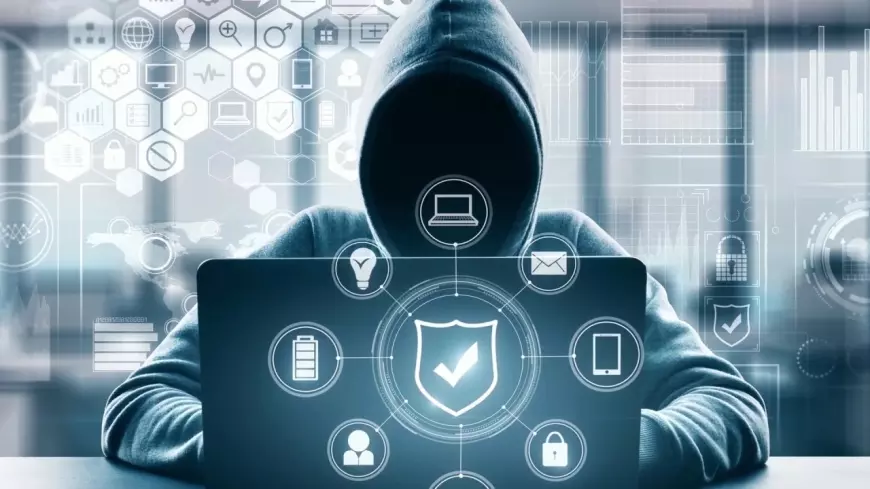How to Recognize and Avoid Phishing Emails to Protect Yourself Online
Protect yourself from phishing attacks with our expert advice. Learn how to spot fraudulent emails, avoid traps, and secure your online presence.

In today's digital landscape, phishing attacks remain a persistent and serious threat. These deceptive tactics aim to trick individuals into revealing sensitive information, from passwords to financial data. This comprehensive guide provides the knowledge and tools you need to identify and combat phishing emails effectively, bolstering your online defenses.
1: Understanding Phishing Attacks
Unmasking Deception
Phishing attacks are cleverly crafted attempts by cybercriminals to gain access to your sensitive information. They often take the form of misleading emails or text messages that appear to come from trusted sources. These messages commonly contain urgent requests or enticing offers designed to trap unwary victims.
2: Common Phishing Techniques
Breaking Down Methods
Phishing comes in various forms, each designed to deceive in different ways:
- Spear Phishing: Targeted attacks that use personal information to create convincing emails.
- Clone Phishing: Cybercriminals replicate legitimate emails with minor alterations to create fake convincing messages.
- Whaling: High-ranking individuals within organizations, like CEOs, are the primary targets.
- Vishing: Phishing extends to phone calls, with scammers using voice communication.
- Smishing: SMS or text messages become vehicles for phishing attempts.
3: Email Security Tips
Your Shield Against Phishers
Now that you understand the enemy, equip yourself with essential email security tips to counter their efforts and protect your digital identity.
4: Scrutinize Sender Details
The First Line of Defense
Always check the sender's email address. Legitimate emails from reputable sources use their official domain. For example, emails from your bank should come from an address like "info@yourbank.com," not "bank-info@gmail.com."
5: Watch for Spelling and Grammar Mistakes
Spotting Red Flags
Phishing emails often contain errors. Be vigilant for poorly written content, misspelled words, and awkward phrasing. For instance, an email from a supposed online retailer with many spelling mistakes is a classic phishing sign.
6: Avoid Clicking Suspicious Links
Safe Web Navigation
If you receive an email with links to unfamiliar or suspicious websites, don't click them. Instead, go directly to the website by typing the URL into your browser. For example, if you get an unexpected email claiming you've won a prize you didn't enter, it's likely a phishing attempt.
7: Be Cautious with Urgent Requests
The Art of Patience
Phishers often create a sense of urgency to pressure victims to act quickly. Whether it's a request for immediate account verification or a threat of losing access, take the time to verify the request's legitimacy. A legitimate organization won't rush you to share sensitive information.
8: Use Two-Factor Authentication (2FA/MFA)
Adding Extra Protection
Enable two-factor authentication (2FA/MFA) whenever possible. Even if a hacker gets your password, they can't access your account without the additional verification step, often involving a temporary code sent to your mobile device or email.
9: Educate Yourself and Your Team
Knowledge Is Power
Train yourself and your colleagues to recognize phishing threats and how to respond. Consider a scenario where a colleague receives an email that appears to come from your CEO, requesting a significant transfer to an unknown account. Adequate training can help spot such fraudulent requests.
10: Keep Your Software Updated
Staying Ahead of Attackers
Ensure your email client and antivirus software are up to date. Software updates often include fixes for known vulnerabilities that hackers may exploit. For example, if you receive a security update notification from your email provider, apply it promptly.
11: Use Email Filtering
Automated Guardians
Utilize email filtering solutions to automatically detect and quarantine phishing emails. Regularly check your spam folder to ensure no legitimate emails were mistakenly marked. Email providers and IT departments use these filters to intercept phishing attempts before they reach your inbox.
12: Report Suspicious Emails
Collective Defense
If you receive a suspicious email, report it to your IT department or email provider. Reporting phishing attempts can help protect others and enable authorities to track and take action against cybercriminals.
13: Change Passwords Regularly
Breaking the Chains
Change your passwords regularly and avoid using the same password for multiple accounts. If you've used the same password on multiple sites and receive an email referencing one of those passwords, threatening to reveal sensitive information unless you pay, changing passwords frequently can counter such extortion attempts.
14: Exercise Caution with Links from Unknown Sources
Navigating the Digital Terrain
Exercise caution with links that don't come from reputable sources. If you receive an email from an unknown sender with a link to an unfamiliar website, it's wise to avoid clicking the link, as it may lead to a phishing site.
In conclusion, in a world where cyber threats are ever-present, your vigilance and online behavior are potent tools in the fight against phishing. By following these email security tips, you can significantly reduce the risk of falling victim to phishing attacks while protecting your digital identity. Remember that staying informed and taking proactive measures are essential for securing your online presence. Stay safe and defend your inbox against phishing attempts.




